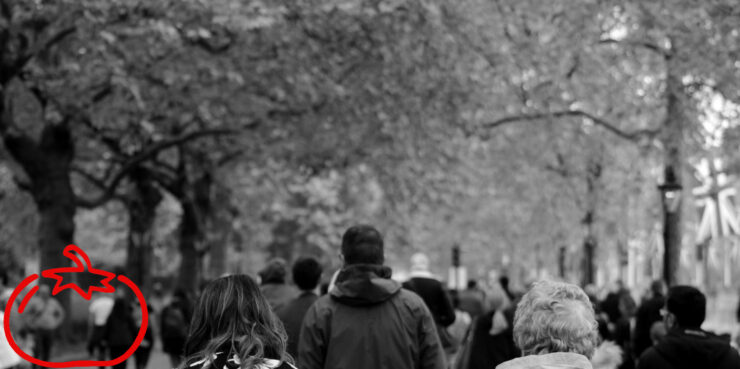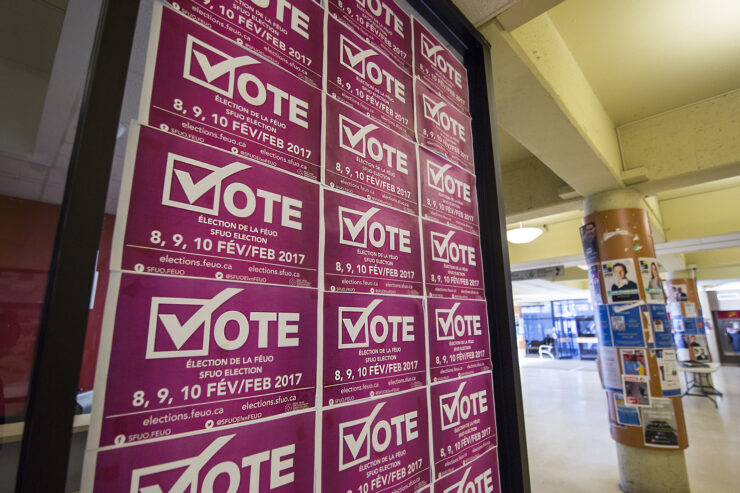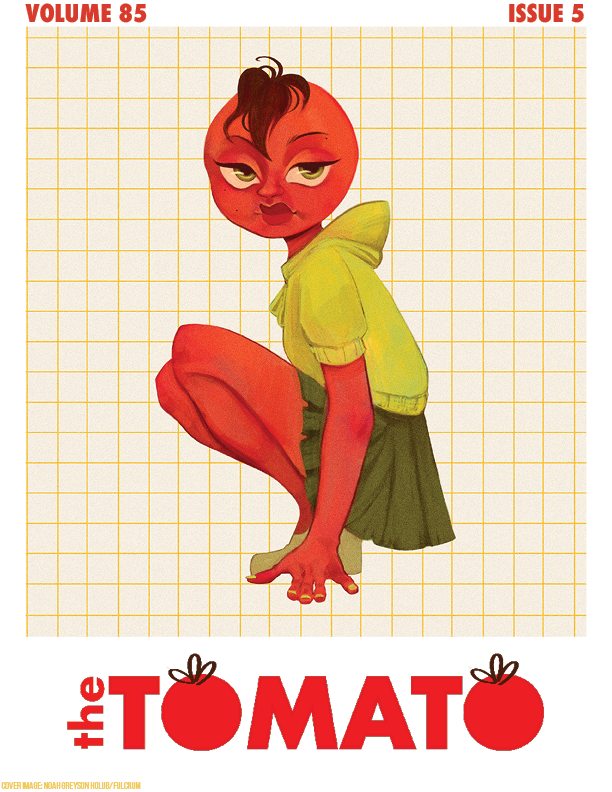A SHOW ABOUT COMMUNICATION, SIMPLICITY, AND REAL LIFE
According to assistant director Hannah Amerinejad, Small Talk is “a show where people save each other.” Directed by Sarah Kitz, Small Talk tells the story of Julie, a young woman who finds herself unable to participate in small talk with her peers. She tries many things in order to fix this about herself like online workshops that claim to teach you social skills in ten easy steps and in-person support groups filled with people even more awkward and socially inept than Julie.
Her issues with small talk extend to every aspect of her life: her mom was injured in a car accident and now suffers from aphasia, causing her to say the wrong words for everything. Her dad prefers silence to the point where he remarries someone who is mute just to get some peace and quiet. Her brother is a talk show host who tries his best to connect with her, but he can’t bridge the gap between the siblings.
This deficit in communication only adds to Julie’s inability to connect with anyone; she has no one in her life that she can talk to.
Sheridan Archer took on the massive role of Julie, and she did so exceptionally well. Although Julie is quiet and doesn’t say much, she makes it clear that she is not shy; she just doesn’t know what to say. Archer makes this come across perfectly.
Small Talk is Amerinejad’s first foray into directing – and it is an enormous undertaking. The show runs almost two and a half hours, with tens of characters. “From [a] design perspective, it’s a big show to take on. It’s just been a lot in a very little amount of time.”
For Amerinejad, it was completely worth it. “Spending time with these very real and flawed characters has been very interesting, because they’re all special, and again, flawed, but not in a negative sense, in their own way. And it’s just so valuable to be with these vulnerable characters in a room.” Amerinejad also adds that they, “want the audience to feel how vulnerable and fragile all of us are, and that we’re all able to… trust each other a little bit more and create more space for each other.”
Along with various tables, chairs, and a floor lamp, simple changes to the set transform it beautifully from a forest, to a parking garage, to a retirement home, to a bus stop. At one point in the show, Julie runs away and finds herself lost in the woods. During this sequence, green curtains fall from the ceiling and are lit up in such a way that they truly appear to be trees – gone is the concrete jungle with hard edges, the set becomes unmistakably a forest.
The costume designer, Salem Duby, describes the costumes as “simple but real.” When asked about his costume choices and overall design concept, he explained that he wanted the characters to be wearing “everyday clothing”, because “these characters struggle with very real issues.”
Despite the costumes being “basic,” according to Duby, there is a lot of thought put into them. “What’s special about them is that they all live in their own colour palettes which personalized the look of each character, and provides better understanding for the audience.”
The distinctiveness of each costume is especially important due to the number of characters — the play consists of eight actors playing a total of 28 characters, which created a unique challenge for Duby — he had to plan for the dozens of quick changes executed by the actors. Duby strived to find a “balance between design and practicality.” The quick changes have to be “simple but effective,” while also making it clear the actors are “changing characters through the use of the costume changes.”
Small Talk is a big show about real issues. Everyone — from coworkers, to family members, to choir attendees, to people you pass in public — is struggling with something. Small Talk is an attempt to illuminate these issues we all have: inability to engage in conversation, aphasia, attempted suicide, familial troubles, loneliness, and more. Small Talk is filled to the brim with real characters facing real problems in a very real way.





